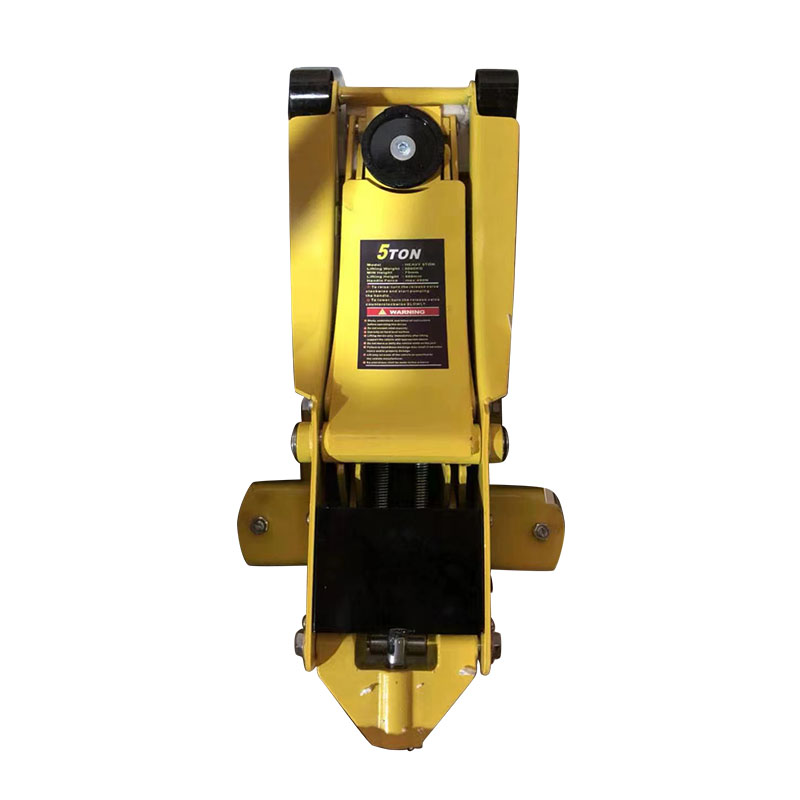The Essential Guide to Car Hydraulic Jacks: What You Need to Know
2025-04-11
When it comes to car maintenance and repairs, one of the most important tools you can have in your garage is a hydraulic jack. Whether you’re changing a flat tire, working on your brakes, or performing routine maintenance, a reliable hydraulic jack makes lifting your car easier, safer, and more efficient. In this blog, we’ll explore what a car hydraulic jack is, how it works, the different types available, and why it's a must-have for any car owner or enthusiast.
What Is a Car Hydraulic Jack?
A car hydraulic jack is a mechanical device used to lift a vehicle off the ground, typically to allow for tasks like changing tires or performing maintenance underneath the car. Unlike traditional jacks that rely on manual force, hydraulic jacks use fluid pressure to generate force, making them much easier to use and more powerful. This hydraulic mechanism allows the user to lift a car with minimal effort while ensuring stability and safety.
How Does a Hydraulic Jack Work?
The key to a hydraulic jack’s efficiency lies in the principles of hydraulics, which involve the use of pressurized fluid. A typical hydraulic jack consists of several main components: the pump piston, hydraulic fluid, and a lifting arm. When you pump the jack's handle, the fluid inside the system is pressurized, which activates the piston to lift the vehicle.
Unlike mechanical jacks, which require the user to turn a crank or handle to raise the car, a hydraulic jack offers the advantage of using less manual effort to achieve the same result. The fluid’s force amplifies the effort applied by the user, allowing the jack to lift heavier vehicles with ease. Once the car is lifted, a safety valve ensures that the vehicle remains securely in place.
Types of Car Hydraulic Jacks
There are several types of hydraulic jacks to choose from, and the right one for you depends on your specific needs. The most common types include:
1. Floor Jacks
Floor jacks, also known as trolley jacks, are the most popular type of hydraulic jack for general vehicle maintenance. These jacks typically feature a long handle and a low profile, making them ideal for lifting cars and small trucks. Floor jacks are easy to maneuver, stable, and capable of lifting a wide range of vehicle sizes.
2. Bottle Jacks
Bottle jacks are compact and powerful, making them ideal for vehicles that require a high lifting capacity in a small form factor. They’re often used for lifting vehicles in tight spaces or for heavy-duty applications like trucks or SUVs. While they tend to be taller than floor jacks, bottle jacks have a higher lifting capacity, which makes them suitable for larger vehicles.
3. Scissor Jacks
Although not hydraulic, scissor jacks are another type of car jack often included with vehicles as a standard tool for emergency tire changes. They are manually operated but are lightweight, portable, and inexpensive. However, scissor jacks lack the lifting power and ease of use that hydraulic jacks offer.
4. High-Lift Jacks
High-lift jacks are designed for off-road enthusiasts and people who need to lift vehicles to great heights. These jacks provide significant lifting power and are commonly used for trucks or 4x4 vehicles. Their extended reach is useful for lifting vehicles that may have high ground clearance or for off-road recovery situations.
Why You Need a Car Hydraulic Jack
1. Safety
Lifting a car is no easy task, and using the right equipment is crucial to ensuring safety during maintenance. A hydraulic jack, when used correctly, provides the stability and control needed to lift a vehicle without risk of injury. Its sturdy design and built-in safety features ensure the car remains securely elevated, preventing accidents.
2. Efficiency
A hydraulic jack makes lifting a vehicle much easier and faster compared to manual jacks. With just a few pumps, you can raise your car to the desired height, allowing you to quickly perform repairs or replacements. This efficiency can save you time and effort, especially if you’re working on a regular basis.
3. Heavy Lifting Power
Hydraulic jacks are capable of lifting much heavier loads than manual jacks. Whether you own a sports car, a large sedan, or a heavy-duty truck, there’s a hydraulic jack that can safely and efficiently lift your vehicle. This makes hydraulic jacks versatile and valuable tools for a variety of car owners.
4. Versatility
Hydraulic jacks are not only useful for changing tires; they can also assist in a variety of other maintenance tasks, including brake work, suspension repairs, and engine work. Their versatility makes them an essential tool for anyone who performs DIY car repairs or maintenance.
Tips for Using a Hydraulic Jack
- Check the Weight Capacity: Always make sure your hydraulic jack is rated for the weight of your vehicle. Using a jack that can’t handle the weight of your car could lead to accidents.
- Place the Jack on a Flat Surface: For safety, always use the jack on a flat, stable surface to prevent it from tipping over.
- Use Jack Stands: While the hydraulic jack lifts the car, it’s important to use jack stands to provide additional support. Never work under a vehicle supported only by a jack.
- Inspect the Jack Regularly: Hydraulic jacks require maintenance to ensure their safety and longevity. Check the jack’s fluid levels, hoses, and seals regularly to ensure everything is in good working condition.
Conclusion
A car hydraulic jack is an indispensable tool for any car owner or DIY mechanic. Its ability to lift heavy vehicles with ease, combined with the safety and efficiency it offers, makes it an essential piece of equipment for anyone working on their car. Whether you’re performing routine maintenance or emergency repairs, investing in a high-quality hydraulic jack will save you time and effort while ensuring your safety. Make sure to choose the right jack for your needs, follow proper safety precautions, and enjoy the convenience of effortless car lifting.



